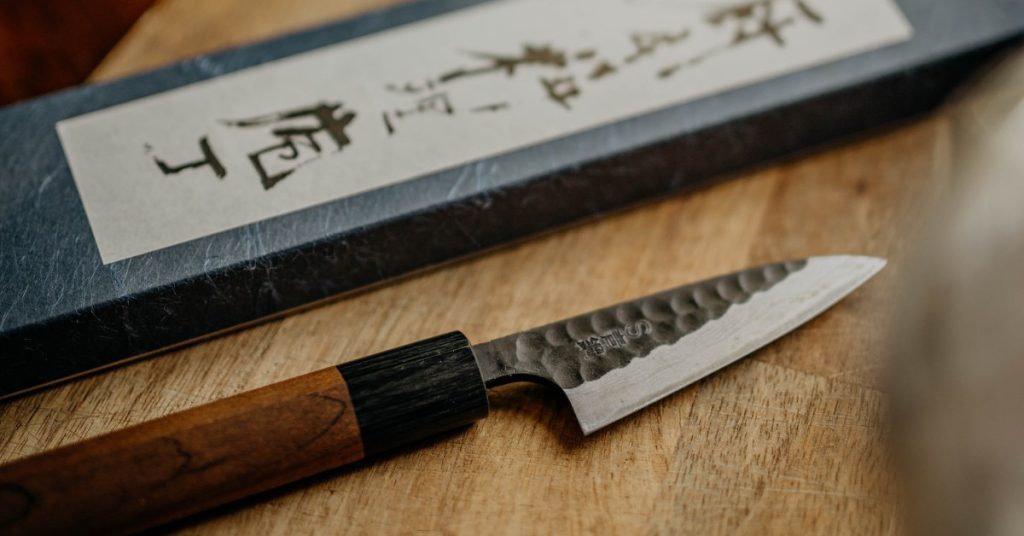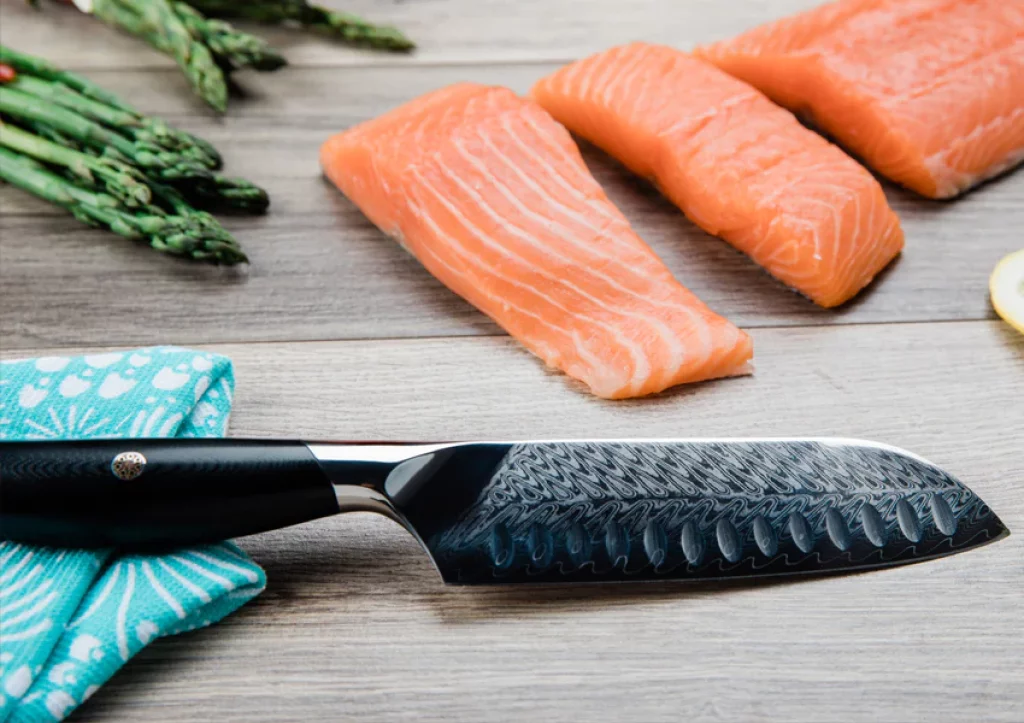There is an old saying that goes, “The knife is the soul of the chef.” For a tool that holds such importance, it’s crucial to have one that is reliable, durable, and incredibly sharp. Among culinary professionals and enthusiasts alike, Japanese knives have earned a reputation for being some of the world’s sharpest knives. But does this mean they are truly the sharpest? This article aims to delve into Japanese knives, exploring their craftsmanship, performance, and whether they indeed hold the title of the world’s sharpest knives.

Understanding Japanese Knives
Japanese knives, as the name implies, originate from Japan and are celebrated for their exceptional sharpness, balance, and design. There are several Japanese knives, each with a specific purpose and unique design.

- Santoku: This multi-purpose knife excels in slicing, dicing, and mincing. The word ‘Santoku’ translates to ‘three virtues,’ referring to the three tasks this knife performs so well.
- Nakiri: This knife features a thin, double-bevel blade perfect for chopping vegetables. It’s designed to make full contact with the cutting board, which allows for more uniform cuts.
- Gyuto: This is the Japanese equivalent of the Western chef’s knife. It is versatile and can cut meat, fish, and vegetables.
The traditional craftsmanship of Japanese knives is a testament to the country’s long history of sword-making. The techniques used in creating these blades have been passed down through generations, leading to functional knives that embody a sense of cultural heritage and artistry. The process involves multiple stages of forging, shaping, and sharpening, all performed by skilled artisans. This attention to detail results in blades of extraordinary sharpness and durability, making them highly sought after by chefs around the globe.
The Making of Japanese Knives – Worlds Sharpest Knife
Creating Japanese knives is a delicate and meticulous process combining centuries-old techniques with modern technology. The process typically starts with the selection of the right steel. Japanese knife makers often use high-carbon steel, known for its superior edge retention and sharpness.
The steel is then heated and hammered multiple times, known as forging. Forging not only shapes the knife but also aligns the structure of the steel, enhancing its strength and durability. After the forging process, the blade is cooled, a stage is known as quenching that further hardens the steel.
The knife then undergoes a sharpening process. Japanese knives are known for their single-bevel edge, which is sharpened on one side, allowing for a much sharper edge than double-bevel knives. The sharpening process requires a lot of skill and precision, as the angle must be consistent to achieve the desired sharpness.
The Sharpness of Japanese Knives

When it comes to sharpness, Japanese knives are indeed among the top contenders. Combining high-quality materials, traditional craftsmanship, and unique sharpening techniques result in a blade of exceptional sharpness.
However, the sharpness of a knife can also depend on its purpose. For example, a sushi knife may be sharper than a general-purpose knife due to its precise task of slicing raw fish.
Compared to knives from other regions, Japanese knives often stand out due to their thin, razor-sharp edges. For instance, German knives, also highly regarded in the culinary world, are typically more robust with a thicker blade and double-bevel edge. They are designed for heavy-duty tasks and durability rather than achieving the extreme sharpness of Japanese knives.
While there may be some knives from other regions or of other materials that can rival the sharpness of Japanese knives, it’s clear that the precision, craftsmanship, and high-quality materials used in Japanese knife-making contribute to a level of sharpness that is hard to beat.
The Use of Japanese Knives in Professional Kitchens
Japanese knives are a common sight in professional kitchens worldwide and for good reason. Their razor-sharp edge, balance, and precision make them a preferred choice for many professional chefs.
One significant advantage of Japanese knives is their ability to make clean, precise cuts. This is particularly important when preparing dishes that require careful presentation, such as sushi, sashimi, or finely chopped vegetables. The sharp edge and thin blade of a Japanese knife allow chefs to slice through ingredients effortlessly, reducing damage to the ingredient’s texture and preserving its freshness.
Moreover, Japanese knives come in various styles and sizes, each designed for a specific purpose. For instance, the Yanagiba is perfect for slicing raw fish for sushi, while the Santoku is an excellent all-purpose knife for chopping, dicing, and slicing.
However, despite their many advantages, Japanese knives have some drawbacks in a professional setting. While excellent for edge retention and sharpness, their high-carbon steel construction is prone to rust if not properly cared for. Chefs need to clean and dry these knives immediately after use to prevent damage.
Additionally, Japanese knives’ thin, sharp edges can be more fragile than their Western counterparts, making them less suitable for heavy-duty tasks like breaking down large cuts of meat or chopping through bone. They also require regular sharpening to maintain their edge, which can be time-consuming in a busy kitchen.
Despite these potential drawbacks, many professional chefs agree that the benefits of Japanese knives far outweigh the downsides. Their exceptional sharpness, precision, and versatility make them a valuable tool in any kitchen.
The Limitations of Japanese Knives
While Japanese knives are praised for their sharpness and precision, they come with certain limitations and care requirements that could deter some users.
- Delicate Construction: Japanese knives are renowned for their thin, sharp blades. However, this delicate construction makes them less robust compared to their Western counterparts when it comes to heavy-duty tasks. For instance, using a Japanese knife to cut through bones or frozen foods could lead to chipping or damaging the blade.
- Care and Maintenance: Japanese knives, especially those made from high-carbon steel, require diligent maintenance. They are prone to rust and discoloration if not properly cleaned and dried after each use. Additionally, these knives must be sharpened regularly to maintain their razor-sharp edge. This level of care can be time-consuming and a drawback for some users.
- Cost: The craftsmanship and materials used in Japanese knives often come with a higher price tag than other knives. While many users find the cost justified by the knives’ performance and longevity, it might be a limiting factor for some.
- Learning Curve: Japanese knives, with their unique shapes and ultra-sharp edges, may require some getting used to, especially for those accustomed to Western-style knives. Using these knives to their full potential often requires specific cutting techniques, contributing to a steeper learning curve.
Despite these limitations, Japanese knives are highly regarded in both professional and home kitchens due to their exceptional sharpness, balance, and precision. Understanding and accommodating these potential limitations can lead to a significantly improved culinary experience.
The Japanese Knife Scams
There haven’t been any specific Japanese knife brands that have been universally labeled as a scam. That being said, counterfeit knives are often sold that may mimic the branding and design of high-quality Japanese knives. Unfortunately, these knock-offs are typical of significantly lower quality and can be considered scams in the sense that they’re falsely marketed as genuine Japanese knives.
Here are a few tips to avoid being scammed when purchasing Japanese knives:
- Buy from reputable retailers: It’s always best to purchase from a well-established retailer or directly from the manufacturer to ensure you’re getting a genuine product. Be wary of deals that seem too good to be true.
- Research the brand: If you’re considering a specific knife, do some research on the brand. Look for reviews and information about the brand’s history and reputation.
- Check for signs of quality: Genuine Japanese knives typically have signs of quality, such as a well-forged blade, a comfortable handle, and good overall balance.
- Beware of counterfeits: If a knife is being sold as a famous brand at a suspiciously low price, it may be a counterfeit.
Remember, scams can evolve over time, and new ones can emerge, so staying informed and vigilant is essential when purchasing products, especially online.
Conclusion
Japanese knives, steeped in centuries of tradition and craftsmanship, offer unparalleled sharpness and precision. Their meticulous construction, from steel forging to honing the blade, is a testament to Japan’s rich knife-making heritage. The sharpness of these knives is evident in their performance, with clean, precise cuts that maintain the integrity of the food being prepared.
However, whether Japanese knives can be considered the “sharpest” in the world depends on one’s definition of sharpness. If sharpness is defined solely by the edge’s fineness, then yes, Japanese knives, particularly those made with traditional methods, are often sharper than their counterparts. But if sharpness includes factors like durability and ease of maintenance, then the answer might vary.
Regardless, there’s no denying that Japanese knives hold a significant place in the culinary world. They represent a perfect balance of form, function, and artistry, which many chefs and home cooks appreciate. Investing in a Japanese knife can enhance one’s culinary journey, providing a tool and a kitchen companion.
References
For further reading and to deepen your knowledge about Japanese knives, consider visiting the following resources:
- Japanese Knife Society: Provides information on different types of Japanese knives and their uses.
- Japan Knife Shop: Offers insights into the process of making Japanese knives.
- Chef’s Pencil: Features articles and guides about professional kitchen equipment, including Japanese knives.
- Knife Planet: Offers detailed reviews and guides on choosing the best Japanese knife.





